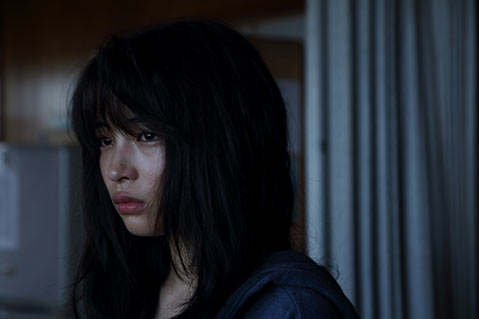
This interwoven triptych of tales from Japan is highly dramatic in its acting and occasionally brutal in its scenes, which range from urban gay culture and the sex trade to the American presence in Okinawa. Each story surrounds the search for a wanted murderer, with characters wondering whether their new friend is the culprit. See ikari-movie.com.
What’s difficult about turning novels into a film?
The initial challenge was organizing the enormous amount of information told in two volumes, and like poetry, weaving the ensemble stories which take place in three different locations, all for a seamless script. Next was on how to show this “rage” that so many today are afflicted by. Rage. which the film endeavors to depict, is not easily expressed by simple gestures like clenching of the fist. Rather, it lies deep within, harbored and not readily shared. The actual emotions may be fear, anxiety and sorrow, all at the same time. Thus, most of my time during principle photography was spent in relaying this not readily definable human emotion to the cast, to make their expression real and relevant before the camera.
Is gay culture accepted in Japan or still hidden? And is the situation between Americans and Okinawans very tense on a daily basis?
Gay culture is more accepted in general but that is not to say individuals are free from the burden of a closeted life. Similar thing could be said for the situation in Okinawa. People remain to be indifferent to matters that are deemed unrelated to their lives and opinions, and prejudices exist toward those who are considered different. The way Okinawans view the relationship between their island and U.S. military presence is varied so any generalization should be refrained. However, I personally do not think that there is constant tension on a daily basis. Okinawans do not seem to consider all U.S. military personnel as evil. That said, once a heinous crime is committed, like the murder of a young woman last year, a deep-rooted revulsion toward atrocious violence surfaces. Being exposed to overwhelming power, Okinawans seems to carry an interwoven sense of submission and rage.
There are some very intense sexual scenes and a very brutal rape. Are mainstream Japanese audiences used to that sort of depiction, or do they find it shocking?
It was especially the case in Okinawa, due to the aforementioned murder of a young woman. At theaters, a disclaimer was placed to notify audiences that the film included a rape scene. The depiction was a subject of many controversies. Some questioned the graphic depiction, and some argued that it was necessary to relate true pain. In the end I believe those who supported this film realized what they were averting their eyes from, whether gay culture or Okinawa or any number of other things, and faced it in earnest through this film.
There is very dramatic emotional breakdown sequences at the end of the film. What did you hope to convey in those scenes?
What consequence does destructive rage bring to each lives? Trusting others come with great risk that may end up in getting hurt or losing something dear. Yet, one should not stop trusting and loving. When one is consumed with anger and hatred, it only brings ruin. Love may be the only recourse from such ruin. I think we all know this to be true. But knowing is one thing, and doing as you know to be true is another. That is how humans are



